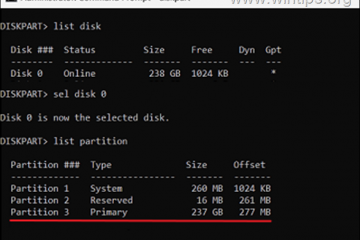Learn some of the easiest ways to quickly open the Settings app on Windows 10 and Windows 11.
On Windows 10 and Windows 11, you must use the Settings app to change many of the system settings. For example, to change various settings, such as personalization, keyboard and mouse settings, managing Windows updates, managing apps, time and language, and privacy & security, you must use the Settings app. While some settings are still only available in Control Panel, more of them are being ported to Settings with each new Windows release.
As such, it is important to know how to open the Settings app. In fact, you should know multiple ways to open the Settings app, because if one method doesn’t work for some reason, you can use another to open it and make the necessary changes.
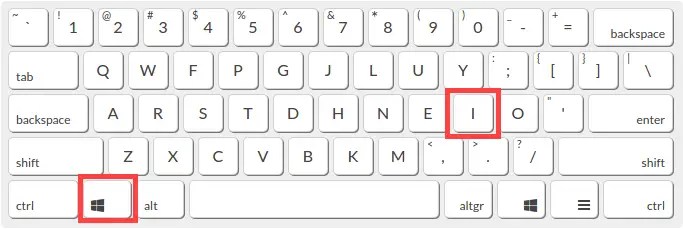
In this guide, I will cover eleven methods to open Settings in Windows 11 and Windows 10. These Les méthodes couvrent tout, du raccourci clavier aux commandes en passant par la création de votre propre raccourci de bureau. Let’s get started.
How to Open Settings in Windows 11 and Windows 10
Here are eleven easy methods to open the Settings app in Windows 11 and Windows 10. Click on a method link below to quickly navigate to the steps.
1. Press Win + I keyboard shortcut
Both on Windows 10 and Windows 11, pressing the keyboard shortcut “Windows key + I“opens the Settings app instantly. C’est l’une des façons les plus faciles et les plus courantes de l’ouvrir. Pour appuyer sur le raccourci du clavier, appuyez et maintenez la «touche Windows», puis appuyez sur «i».
2. Use the Power User Menu to Open Settings
First, press the “Windows key + X“shortcut or right-click the “Windows key”on the taskbar to open the Power User menu. Ensuite, sélectionnez” Paramètres “Dans la liste, et il lance la fenêtre des paramètres.
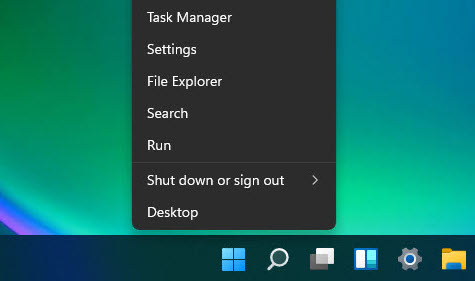
3. Click the “Gear”icon in the Start menu
The Start menu has a dedicated icon that looks like a ‘Gear’, which, when clicked on, opens the Settings app. Voici comment l’utiliser.
Tout d’abord, appuyez sur la touche « Windows » sur votre clavier pour ouvrir le menu Démarrer. Next, click the Settings icon (looks like a gear) to launch the Settings app.
Note: If the Settings icon is not visible, you have to enable it via Start Settings. To do that, open the Start menu, right-click anywhere in the Start menu, select “Start Settings,”click the “Folders”option, and turn ON the “Settings”toggle.
 windows 11 Start menu settings icon
windows 11 Start menu settings icon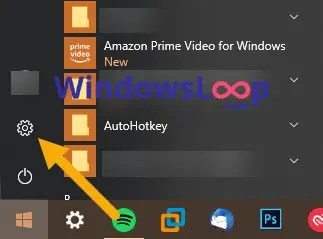 Windows 10 start menu
Windows 10 start menu
4. Recherchez des «paramètres» dans le menu Démarrer
Comme toute autre application sur votre ordinateur, vous pouvez rechercher et lancer des paramètres à partir du menu Démarrer. To do that, open the Start menu by pressing the “Windows key”, search for “Settings“, and then click on it or click the “Open“option on the right panel to launch the Settings app.
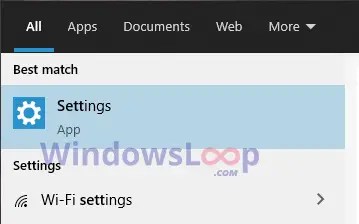
5. Ouvrez les paramètres des paramètres rapides (centre de notification dans Windows 10)
sur Windows 11 :
Windows 11 comprend un panneau de paramètres rapide qui vous permet de basculer rapidement plusieurs fonctionnalités. Outre les bascules rapides, vous pouvez également en ouvrir des paramètres. Here’s how.
First, click the “Network“or “Volume“on the taskbar’s system tray, and then click the “Settings“icon (looks like a gear).
Note: You can also press “Windows key + A”to open the Quick Settings panel.
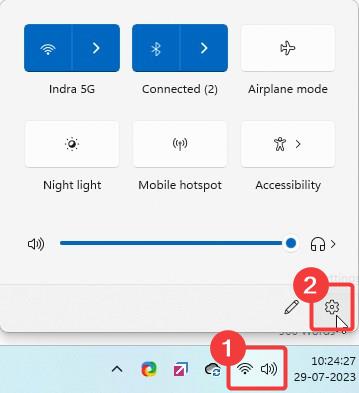
On Windows 10 :
Tout d’abord, cliquez sur l’icône des notifications sur le plateau système de la barre des tâches. Ensuite, cliquez sur le bouton” tous les paramètres “. As soon as you click the button, Settings will open.
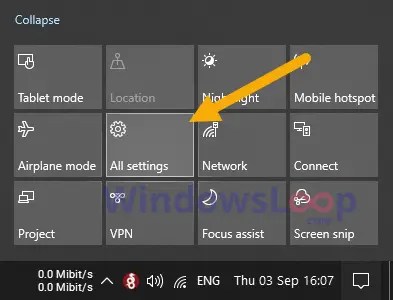
6. Open Settings from the File Explorer (Only on Windows 10)
Just like the old control panel, File Explorer has a dedicated option to access the settings app.
First, open the File Explorer by clicking the “File Explorer”icon on the taskbar or by pressing the “Windows key + E“shortcut. Ensuite, accédez à l’onglet” ordinateur “dans le menu du ruban supérieur, puis cliquez sur le bouton” ouvrir les paramètres “. Il ouvre l’application Paramètres.
Remarque : Sur Windows 11, Microsoft a supprimé cette option dans l’explorateur de fichiers.

7. Use “ms-settings:”run command
Windows has several built-in run commands and shell commands that open different apps, options, and folders. Une telle commande est MS-Settings, qui lance l’application Paramètres. Voici comment l’utiliser.
Tout d’abord, lancez la boîte de dialogue Exécuter en appuyant sur” clé Windows + R “. Ensuite, tapez” MS-Settings: “et cliquez sur” ok “ou appuyez sur entrez . As soon as you do that, the settings app will open itself.
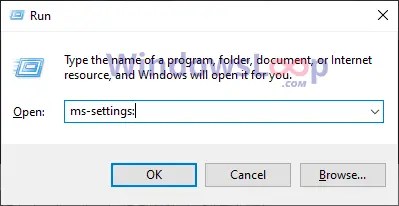
8. Ouvrez les paramètres de l’invite de commande
Tout d’abord, ouvrez le menu Démarrer en appuyant sur la «touche Windows» de votre clavier. Ensuite, recherchez” invite de commande “et cliquez sur” ouvrir “pour lancer la fenêtre de l’invite de commande. Ensuite, exécutez la commande « start MS-Settings: » pour ouvrir les paramètres.
 9. Ouvrez les paramètres de PowerShell
9. Ouvrez les paramètres de PowerShell
Tout comme avec l’invite de commande, vous pouvez également vous rendre aux paramètres via PowerShell. Voici comment:
Tout d’abord, ouvrez le menu Démarrer en appuyant sur la «touche Windows» de votre clavier. Ensuite, recherchez” PowerShell “et cliquez sur” ouvrir “pour lancer la fenêtre PowerShell. Ensuite, exécutez la commande” start-process”MS-Settings:”“pour ouvrir les paramètres.

10. Créez un raccourci de bureau pour ouvrir les paramètres
Si nécessaire, vous pouvez également créer un raccourci de bureau personnalisé pour ouvrir les paramètres. Here’s how:
Right-click on the desktop.Select the “New“> “Shortcut“option.Type “ms-settings:“in the blank field and click “Next“.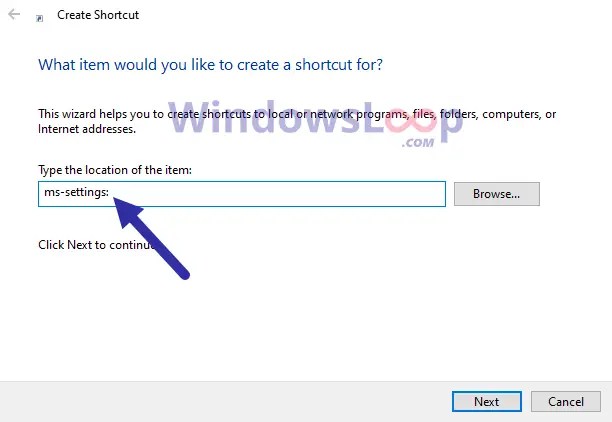 Type “Settings“in the “Name”field and click “Finish“.
Type “Settings“in the “Name”field and click “Finish“.
That is all. Vous avez créé un raccourci d’application Paramètres. Chaque fois que vous souhaitez ouvrir l’application Paramètres, double-cliquez simplement sur le raccourci que vous venez de créer.
11. Open Settings From the Desktop Right-Click Menu
It’s one of the lesser-known methods, but you can also launch Settings via the desktop right-click menu. Voici comment:
Accédez à votre raccourci Desktop en cliquant sur le raccourci”clé Windows + D”ou en cliquant sur le bouton de bureau dans la barre des tâches. Ensuite, cliquez avec le bouton droit n’importe où et sélectionnez l’option « Afficher les paramètres ».
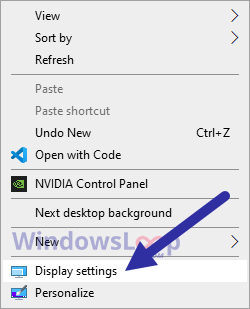
This action opens the Settings window with “System”> “Display”page. Vous pouvez accéder à d’autres onglets/pages à partir de la barre latérale. Il s’agit d’un peu de rond-point, mais il fonctionne dans un pincement
-de nombreuses façons d’ouvrir les paramètres de Windows 11 et 10
en conclusion, vous avez onze méthodes pour que vous n’utilisez rapidement que les méthodes de la manière répertoriée, mais ce guide vous permet de vous proposer une ou deux méthodes de la manière énumérée Eleven, mais ce guide vous permet de vous proposer une ou deux méthodes de l’Eleven Eleven, mais ce guide, mais vous n’utilisez que pour vous-même pour que vous ne puissiez que vous pour vous proposer des méthodes de la façon de vous proposer des méthodes de l’Eleve Paramètres. Par exemple, j’ouvre généralement les paramètres à l’aide du raccourci”Key + i””Windows ou à partir du menu utilisateur Power. Vous pouvez choisir une méthode différente en fonction de la façon dont vous utilisez votre ordinateur.
Un astuce rapide: une fois que vous avez ouvert l’application Paramètres, cliquez avec le bouton droit sur l’icône”Paramètres”sur la barre des tâches et sélectionnez”Pin to TaskBar”. Cette action introduit l’icône des paramètres de la barre des tâches pour un accès rapide et facile.
Si vous avez des questions ou avez besoin d’aide, commentez ci-dessous. I’ll be happy to assist.
Update: This guide has been updated to add a new method, clarify certain methods only work on Windows 10, and simply the language.
